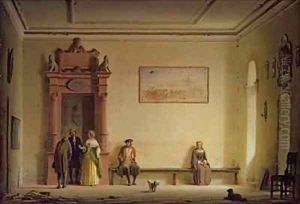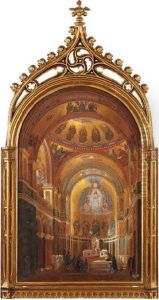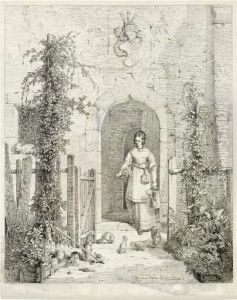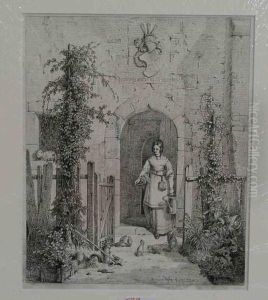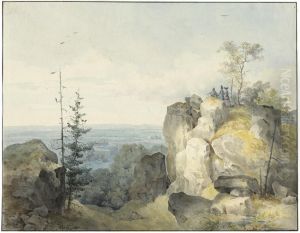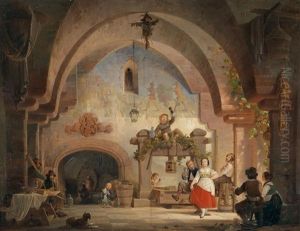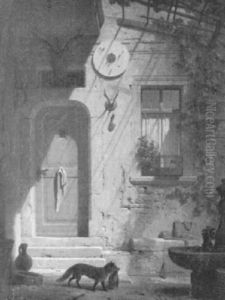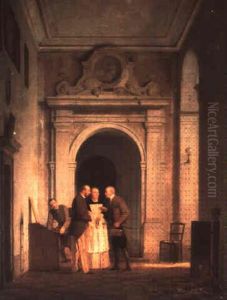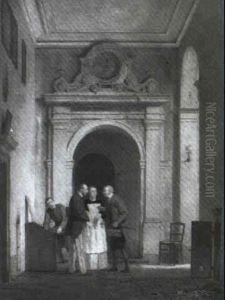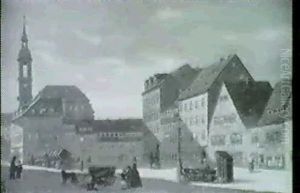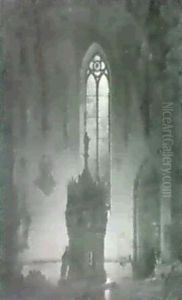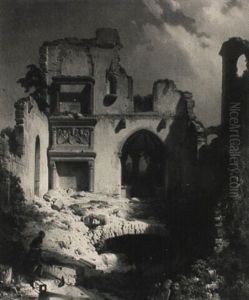Hermann Dyck Paintings
Hermann Dyck, also known as Hermann Dyckerhoff, was a German artist renowned for his detailed engravings and lithographs. Born on November 3, 1812, in Pirmasens, Rhineland-Palatinate, Germany, Dyck showed an early interest in art, which led him to pursue studies in this field. His work primarily reflects the 19th-century European art scene, characterized by a keen interest in realism and detail, as well as romantic influences.
Dyck's artistic journey took him to various parts of Germany, where he was influenced by the works of other artists and the changing artistic trends of his time. He was particularly known for his architectural and landscape engravings, which captured the essence of European cities and countryside with remarkable precision and beauty. His attention to detail and ability to convey texture and light in his engravings made his works highly sought after, both in his time and in contemporary collections.
Throughout his career, Hermann Dyck contributed significantly to the popularization of engraving as a form of art. He was adept at using this medium to express subtle nuances of light and shadow, which added a dramatic effect to his compositions. Despite facing the challenges of a changing art market and the advent of photography, Dyck's works continued to enjoy popularity, showcasing his adaptability and enduring talent.
Dyck's legacy is preserved in various art collections and museums across Europe, where his works continue to be studied and admired for their technical skill and artistic beauty. He passed away on January 25, 1874, in Munich, Bavaria, leaving behind a body of work that continues to inspire and captivate art lovers and historians alike. His contributions to the field of engraving and lithography remain significant, highlighting his role as a pivotal figure in the 19th-century European art scene.
